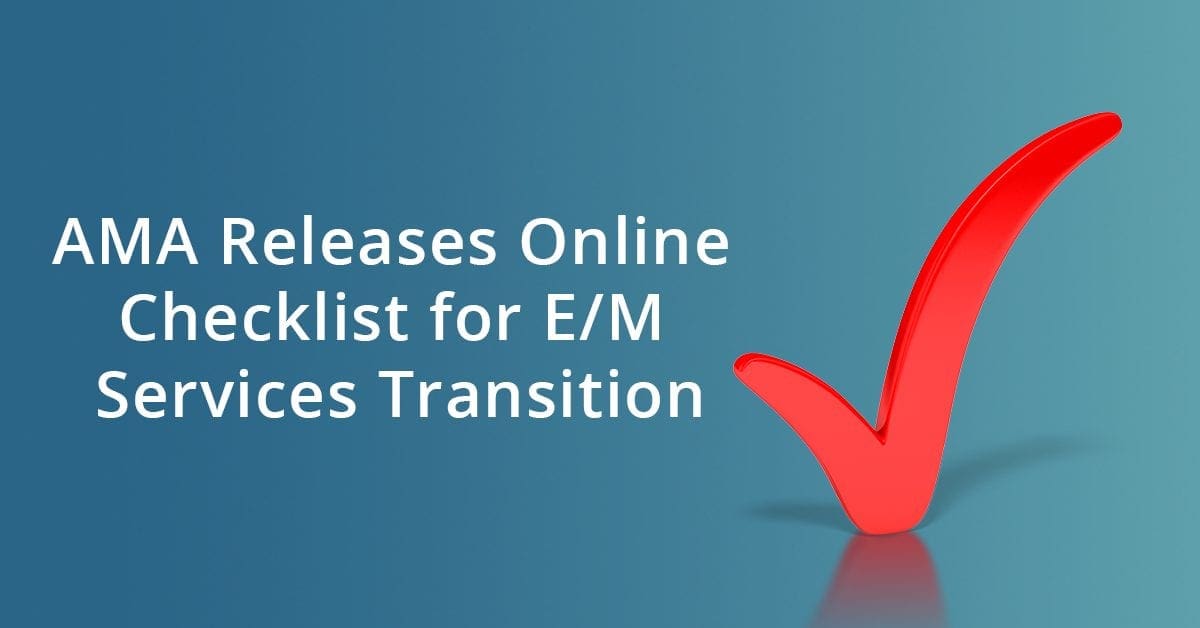Call us toll-free: 800-878-7828 — Monday - Friday — 8AM - 5PM EST

By Nathan Eddy for Healthcare IT News
The American Medical Association issued a checklist for the transition to fundamental changes in evaluation and management (E/M) services, a medical coding process in support of medical billing which practicing healthcare providers must use to be reimbursed by Medicare, Medicaid programs or private insurance.
The checklist provides a guide for physician practices, which already are grappling with a host of IT-related issues in the areas of revenue cycle management, including robotic process automation to manage revenue cycles.
EHRs and E/M documentation
Meanwhile, the adoption of electronic health records and supporting health information technology may result in new methods of E/M documentation and coding technology adoption.
These types of E/M coding issues also apply to provider organizations that are offering telemedicine services and the additional E/M coding challenges that virtual care will increasingly bring to the fore.
Physicians have struggled for decades with burdensome reporting guidelines for reporting office visits and other E/M codes, and with the proliferation of EHRs into physician practices, documentation requirements for office visits has moved toward increased “note bloat.”
The AMA has been working with the Centers for Medicare & Medicaid Services to help simplify E/M requirements, make them clinically relevant and reduce excessive documentation burden.
More time with patients
“These foundational changes are intended to reduce documentation burden and provide physicians more time with patients, not paperwork,” AMA President Patrice Harris said in a statement. “The AMA is helping physician practices to start planning now and offers resources to anticipate the operational, infrastructural and administrative workflow adjustments that will result from this overhaul.”
Earlier in December, the AMA announced an effort to train future doctors on health systems science called the Health Systems Science Scholars Program.
The 12-month program will provide select medical school and residency program faculty with the resources and coaching they need to design, implement and evaluate Health Systems Science curricula at their institutions.
Faculty members selected through a competitive application process will receive resources and individual coaching and mentorship from nationally known experts in health systems science, representing 38 medical schools and residency programs across the country.
Each scholar will complete a curriculum project over the course of the year that their institution can use to integrate health systems science into physician training.
Activities for scholars
During the yearlong program, scholars also will attend a two-day, faculty-development workshop, participate in webinars, and meet with a designated mentor.
The first IT-savvy medical students graduated under a pioneering AMA program in 2018, the Accelerating Change in Medical Education Consortium, which seeks to train new physicians with EHRs, population health and value-based care in mind.
ACME was launched back in 2013 with the goal of helping educate students in the information technology, techniques and value-based philosophies that have come to define healthcare in the 21st Century.
